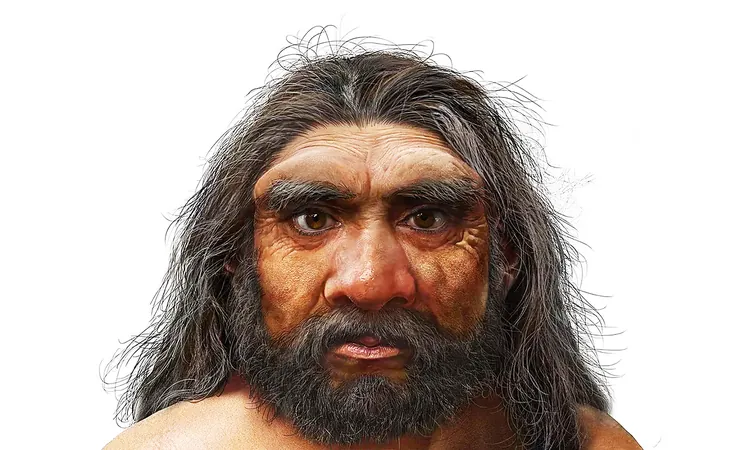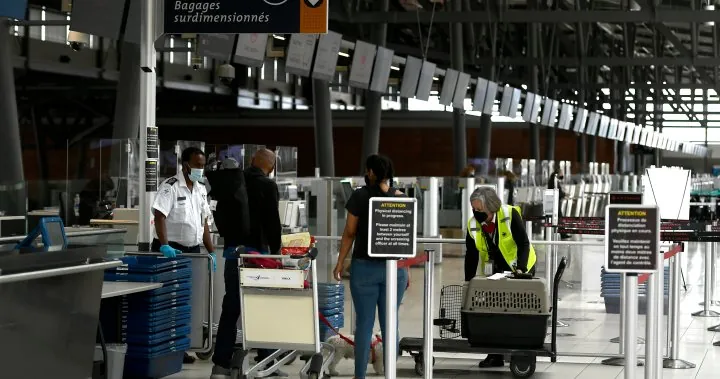
Discovering "Dragon Man": The Fascinating Face of an Ancient Human Cousin
2025-01-20
Author: Emma
A groundbreaking endeavor by a team of scientists has brought to life the face of a long-lost human ancestor known as "Dragon Man." This captivating reconstruction provides a rare window into our distant past and highlights the connections between modern humans and their ancient relatives, the Denisovans, who thrived in parts of Asia for tens of thousands of years.
Who Were the Denisovans?
The Denisovans, an enigmatic group closely related to Neanderthals, are believed to have lived between 200,000 and 25,000 years ago. Their remains, primarily identified through sparse fossil evidence and DNA analysis conducted from a finger bone found in Siberia in 2010, suggest that they interacted with early Homo sapiens and left lasting genetic imprints across Southeast Asia and Oceania. The mystery surrounding these ancient humans continues to captivate researchers as they consider how Denisovans may have influenced modern human evolution.
The Harbin Skull Uncovered
A key artifact in this story is the Harbin skull, discovered years ago by a laborer in northeastern China. This remarkably well-preserved fossil is speculated to belong to a Denisovan due to its anatomical similarities to a 160,000-year-old jawbone found on the Tibetan Plateau. Although DNA extraction from the jawbone wasn’t feasible, advanced techniques such as paleoproteomics have helped establish its lineage.
Dating back approximately 150,000 years and originating from the same region that the Denisovans inhabited, the Harbin skull stands out as one of the most complete specimens ever found, providing essential insights into the physical characteristics of these ancient beings.
Reconstructing a Lost Face
Paleoartist John Gurche, in collaboration with National Geographic, meticulously recreated what Dragon Man might have looked like. Using a plastic replica of the Harbin skull, Gurche analyzed crucial facial features, including the shape of the brow and jaw. He aimed to create a lifelike representation that could evoke the experience of looking directly into the eyes of an extinct species.
Employing a combination of anatomical comparisons from extant species, Gurche determined that Dragon Man likely had a wide mouth, prominent brow, and a braincase size similar to that of modern humans. His reconstruction reveals a striking blend of familiar and distinct traits, emphasizing both our shared ancestry and the diversity of early human populations.
Traveling the Ancient World
Fossil evidence suggests that Denisovans were adept travelers, with remains and DNA found across a vast geographical range from Siberia to Southeast Asia. This widespread distribution raises questions about their migratory patterns and interactions with Homo sapiens. Genetic studies indicate that Denisovans interbred with modern humans, potentially enhancing our ancestors' abilities to adapt to various environments, including high altitudes.
Despite insinuations of such interactions, the fate of the Denisovans remains shrouded in mystery. Researchers are puzzled over why they vanished and how they managed to traverse vast distances in a world where travel was significantly more arduous than it is today.
The Future of Denisovan Research
Continued exploration and excavation could yield more fossils, allowing scientists to paint a clearer picture of Denisovan life, social structures, and diets. The scarcity of Denisovan remains compared to Neanderthals makes each discovery, such as the Harbin skull, crucial for expanding our understanding of these remarkable prehistoric humans.
With Gurche's model making its debut in the February 2025 issue of National Geographic, this work not only contributes to our knowledge but also invites deeper curiosity about the complex web of human ancestry. Every new finding brings us one step closer to piecing together the Denisovans' narrative, reminding us of the diverse human populations that roamed our planet in the past.
A Captivating Reflection on Human Origins
With each discovery related to Dragon Man and the Denisovans, we gain a richer tapestry of evidence underscoring how varied human ancestry shaped who we are today. The Harbin skull's correlations with other significant finds reveal how vital these ancient artifacts are in reshaping our comprehension of human evolution.
Stay tuned as the quest for knowledge about the Denisovans continues—every new piece of evidence adds depth to the story of our interlinked past. Who knows what fascinating revelations await just around the corner?









 Brasil (PT)
Brasil (PT)
 Canada (EN)
Canada (EN)
 Chile (ES)
Chile (ES)
 Česko (CS)
Česko (CS)
 대한민국 (KO)
대한민국 (KO)
 España (ES)
España (ES)
 France (FR)
France (FR)
 Hong Kong (EN)
Hong Kong (EN)
 Italia (IT)
Italia (IT)
 日本 (JA)
日本 (JA)
 Magyarország (HU)
Magyarország (HU)
 Norge (NO)
Norge (NO)
 Polska (PL)
Polska (PL)
 Schweiz (DE)
Schweiz (DE)
 Singapore (EN)
Singapore (EN)
 Sverige (SV)
Sverige (SV)
 Suomi (FI)
Suomi (FI)
 Türkiye (TR)
Türkiye (TR)
 الإمارات العربية المتحدة (AR)
الإمارات العربية المتحدة (AR)